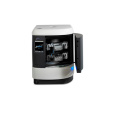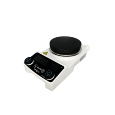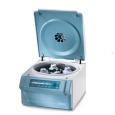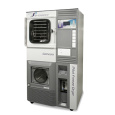方案详情
文
聚合酶链式反应(PCR)是一种在分子生物学中广泛使用的方法,用于制造特定 DNA 片段的多个拷贝。PCR 可以使特定目标/测试样品的少量 DNA (低至单个拷贝)成指数扩增,从而产生该特定 DNA 片段的数千到数百万个拷贝。
方案详情

Polymerase chain reaction (PCR) is a method widely used in molecular biology to make many copies of a specific DNA segment. PCR enables a small amount (as low as a single copy) of DNA of a particular target/test sample to be exponentially amplified to generate thousands to millions more copies of that particular DNA segment. A precursor reverse transcript process (RT-PCR) can also be added if the target sample is RNA. The RT process first converts the RNA to DNA, and then the PCR process follows with DNA amplification. These are the typical reagents and components involved in a typical PCR method and the role that they each play:T E C H N O T EPCR Diagnostic Kits& Freeze-Drying Considerations PCR Process Overview Polymerasechainreaction(PCR)isamethodwidelyusedin molecularbiologytomakemanycopiesofaspecifciDNA segment. PCR enables a small amount(as low as a single copy) of DNA of a particular target/test sample to be exponentially amplified to generate thousands to millions more copies of that particular DNA segment. A precursor reverse transcript process (RT-PCR) can also be added if the target sample is RNA. The RT process frist converts the RNA to DNA, and then the PCR process follows with DNA amplifciation. These are the typical reagents and components involved in a typical PCR method and the role that they each play: 1. Nucleotides (example: Nucleoside Triphosphate, dNTP)– these are the molecular building block “raw material” for creating new DNA 2. Enzymes I. (Taq) DNA Polymerase- enzyme required to drive the DNA replication process II. Reverse Transcriptase – enzyme required to frist convert target RNA into DNA 3. Primers–syntheticDNAoligonucleotides.Short,single-strand DNA/RNA fragments, which are designed specifcially to falnk the target DNA region of interest; they provide the starting point for the DNA synthesis; two primers are needed, one for each side of the region of interest. 4. Detection Probes or Dyes I. Probes–fluorescently-labelledoligonucleotideswhich bind downstream of each primer; two difefrent probes are needed, and they fluoresce when both are attached to a specifci DNA segment to provide a detectable indicator signal as amplifciation progresses II. Dyes- which will fluoresce in the presence of DNA to provideadetectableindicatorsignalasamplifciation progresses 5. Other excipients, such as MgCl2 cofactor, pH bufefr, mannitol, trehalose, BSA, PEG20000 6. Target DNA/RNA I.For diagnostic kits, it is the DNA of interest which the kit is testing for and is replicated for detection(virus, bacteria, etc); obtained from the sample being tested, if present II. For research/lab work – specifci DNA to be replicated Therearenumerous processingchallengeswith thePCR method. The various component solutions need to be accurately combined in a plate well or tube “cocktail”. The components require refrigeration and they have a relatively short shelf life and cross contamination is a concern. R&D lab bench pipetting errors can also be troublesome. PCR “Cocktail” Thermal Cycler for PCR Amplifciation ThestandardPCRprocessrequiresacustomthermalcycler instrument to repeatedly heat/cool the reaction test tube for 30-40 cycles, to allow the DNA amplifciation process to multiply. The same instrument may also have a fluorimeter to monitor/measure the amplified target DNA. Promising newer amplifciation methods, including Loop-Mediated(LAMP) and Recombinase Polymerase Amplifciation (RPA)areisothermalprocesseswhichtonotrequirethermal cycling and use of special equipment. Newertechnologyisalsobeingdevelopedtoloadreagents onto microfluidic channels/chips. The lower thermal mass of the smaller amount of reagent promises for faster and more precise temperature cycling which then would yield quicker results. Microfluidic PCR Chip PCR& Freeze-Drying Freeze-drying has become an integral part of the PCR process and is used for both individual reagents as well as end-product testkitreagents.StudieshaveshownthatPCRamplifciation efcfieincywasgenerallyunafefctedbyusingeitherfreeze-dried individual reagents, or by freeze-drying the end-user PCR diagnostic kits. Although the probe fluorescence intensity was marginally decreased, it was not enough to afefct the ability to measure the process. Final moisture content in the range of 1-3% is desirable. This meansthatthefreeze-dryingprocesswillneedtoincludea secondary drying phase once all the ice has sublimed. Moisture measurement via Karl-Fisher Titration is recommended. Freeze-dried PCR reagents and diagnostic kits are very hygroscopic. Caremustbetakentoavoidexposuretoambientmoisture when unloading the product from the freeze dryer. A humidity-controlled room can be used to slow moisture re-absorption. For product storage and shipment, the reagent must be sealed in a moisture-proof container, such as an aluminum bag. Frozen Polymerase& Reverse Transcriptase enzymes may contain up to 50% glycerol as a cryo-protectant and stabilizer. Glycerol is not conducive to successful freeze-drying as it can interfere with moisture removal, which afefcts product stability and structure. Glycerol-free reagents are always preferable when freeze-drying. Freeze-Drying Equipment Considerations Withreagentsamplesizesmeasuredinmicroliters,thetotal moisture content in freeze-dried PCR reagent batches is very small. Freeze dryer designs do not need to have a 1:1 shelf surface to ice condenser surface area ratio, which is typical for equipment used in high-moisture, bulk liquid, or vial applications. Product probes are difcfulit to use when the product sample size is in the microliter range. For process development work, comparison of Pirani& Capacitance Manometer pressure readings is a suggested drying endpoint tool. Pressure rise testing can also be used. Therefrigerationsysteminthelyophilizercanalsoberight-sized(as opposed to over-sized), with the smaller compressors resulting in greatly reduced room heat to contend with. This means less impact on HVAC and energy usage. Air-cooled pilot-sized freeze dryer models are commonly used for medium batch size diagnostic kit applications, which avoids the need for cooling water utilities which may not be easily obtained in many PCR kit processing facilities. TheVirTisUltraFreezeDryerisideallysuitedfordiagnostic applications. It provides over 2m2 of shelf area in a compact configuration. The design allows for great flexibility in processing. SP VirTis Ultra Pilot and Small Production Lyophilizer Freeze-Drying Process Considerations for PCR Diagnostic Test Kits The obvious advantage of freeze-drying PCR diagnostic kitsiseliminatingrelianceonthecoldchainofrefrigerated transportation and storage of the kits, and extending their usable shelf life. The96-wellplateisastandardconfigurationusedforPCR diagnostic test kits. Automated liquid-fliling equipment is commercially available, which provides greater process control and repeatability, in addition to faster loading times and more throughput. Evaporationandtheliquidproducttemperaturecanbea concern during the batch loading process into the freeze dryer, especially for larger units with larger batch sizes, which will take longer to fully load. Loading onto pre-cooled shelves can help. If loading onto chips or microfluidic channels, then evaporation is even more of an issue. The lyophilization process depends on adequate heat transfer into the product. Most 96-well formats are plastic tubes with minimal surface area at the bottom to be in contact with the freeze dryer shelf. Aluminum cooling-blocks can be used during freeze-drying to increase conductive heat transfer. Aluminum Heat Transfer Block for 96-well Convective heat transfer is also important in freeze-drying, as it can assist in distributing heat more uniformly across the shelf, mitigating the edge efefct caused by difefrences in radiant heat transfer.Usingslightlyhighervacuumsettings(ex:100mTorr instead of 60mTorr) if possible, will provide a more homogenous batch. Unfortunately, many PCR reagents have very low melting/collapse temperatures, so a higher vacuum setting in the freeze- drying protocol may not always be feasible. It may be possible to add excipients to the PCR mix which will increase the collapse temperature, to allow the use of higher vacuum settings. Other beneftis of higher vacuum settings include making the recipe more easily transferrable to other freeze dryers which may not be able to achieve very low vacuum settings, and a reduced chance of choked vapor flow to the condenser. Forsignalcalibrationpurposes,diagnostictestkitswilloften contain both a Negative Control mix with no target DNA/RNA, and a Positive Control mix containing the target DNA/RNA. The control samples are analyzed in addition to the mix containing the patient test sample, and the fluorescent signals are compared to determine if the patient sample is positive or negative. One issue with processing positive control samples is that there is high risk of cross-contamination inside a freeze dryer. The use of multiple freeze dryers can help, with the positive control always processed in the same unit. Freeze-Drying of Individual PCR Reagent Source Materials In addition to extending their shelf life and avoiding the need for a supply cold chain, the other beneftis of freeze-drying PCR reagents for laboratory use include: • More robust process with improved reliability and less batch variation, as freeze-drying greatly reduces the potential for lab bench pipetting errors and contamination • Avoids the damaging efefcts of multiple freeze/thaw cycles • Reduced set-up and processing time • Lesswastefromexpiredproduct,andlowershippingand storage costs Forconveniencepurposes,pre-formulatedfreeze-driedPCR “Master-Mix” reagents are also commercially available, which can improve throughput by eliminating some of the mixing steps at the lab bench. The master mix would typically contain the nucleotides, enzymes, cofactor, and bufefr. Final moisture content in the range of 1-3% are desirable. This meansthatthefreeze-dryingprocesswillneedtoincludea secondary drying phase once all the ice has sublimed. Moisture measurement via Karl-Fisher titration is recommended. Freeze-Dried Reagent Beads A common approach employed by some PCR reagent suppliers for laboratory experiment use is to provide freeze-dried reagent master-mix beads, which are frozen using specialized equipment with liquid nitrogen before they are then freeze-dried. Lyophilized PCR Beads Image used with kind permission of Evik Diagnostics, Inc Therearetrade-ofsfwithusingliquidnitrogentofreezethe reagent before it is to be freeze-dried. The very fast freezing rate does minimize the freeze concentration efefct such as pH shift, common with slower freezing rates. However, it does result in very small ice crystal sizes, which result in more resistance to vapor flow during drying and slower drying times. The small sample volumes typical with PCR mitigates this issue, but colder shelf temperature and lower vacuum settings will be needed to keep the beads from melting during primary drying. In addition, the beads must be kept frozen as they are prepared and accumulated for a freeze-drying batch. A refrigerated cold plate can be used to assist. The freeze dryer shelves also need to be pre-cooled to avoid product melting before vacuum is pulled. Pre-freezing the shelves can lead to frost build up from ambient conditions before the product chamber door is sealed under vacuum. The freeze-dried pellets or beads are often placed in PCR tubes and then sealed in a moisture-proof pouch. For more information on the SP VirTis range of freeze dryers, please visit https://www.sp-scientifciproducts.com/virtis
确定
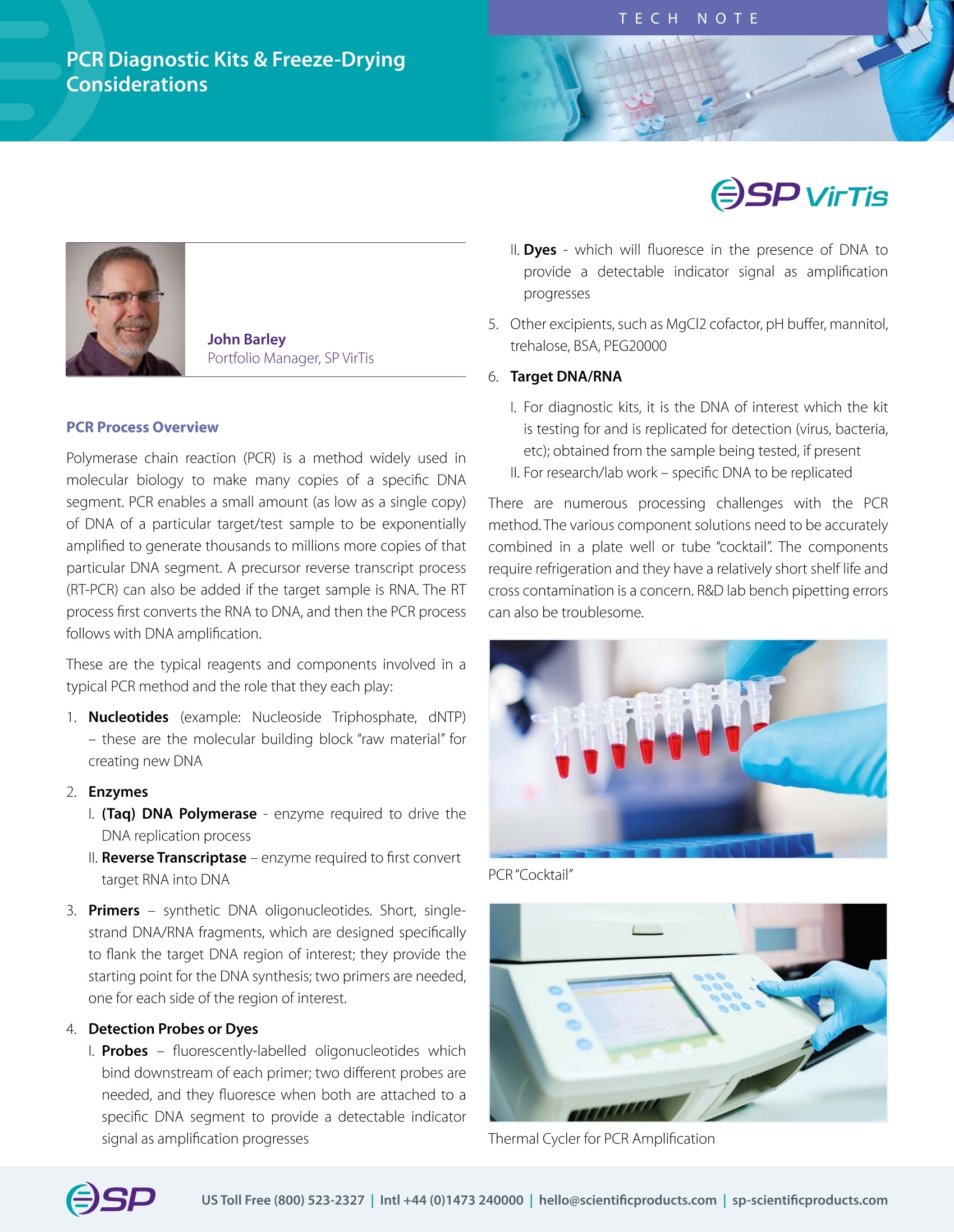



还剩2页未读,是否继续阅读?
德祥科技有限公司为您提供《PCR诊断试剂盒及冷冻干燥的一些考虑》,该方案主要用于生物药品药物研发中PCR诊断试剂盒检测,参考标准--,《PCR诊断试剂盒及冷冻干燥的一些考虑》用到的仪器有Biopharma Technology冻干显微镜LyoStat5、英国Genevac溶剂蒸发工作站S3i HT、INNOTEG磁力搅拌器WM-1、Genevac自动化溶剂蒸发工作站EZ-2 4.0 Bionic、Hettich离心机ROTINA 420、Biopharma Micropress冻干饼强度测试仪、SP冷冻干燥机Genesis Pilot Lyophilizers
相关方案
更多
该厂商其他方案
更多











